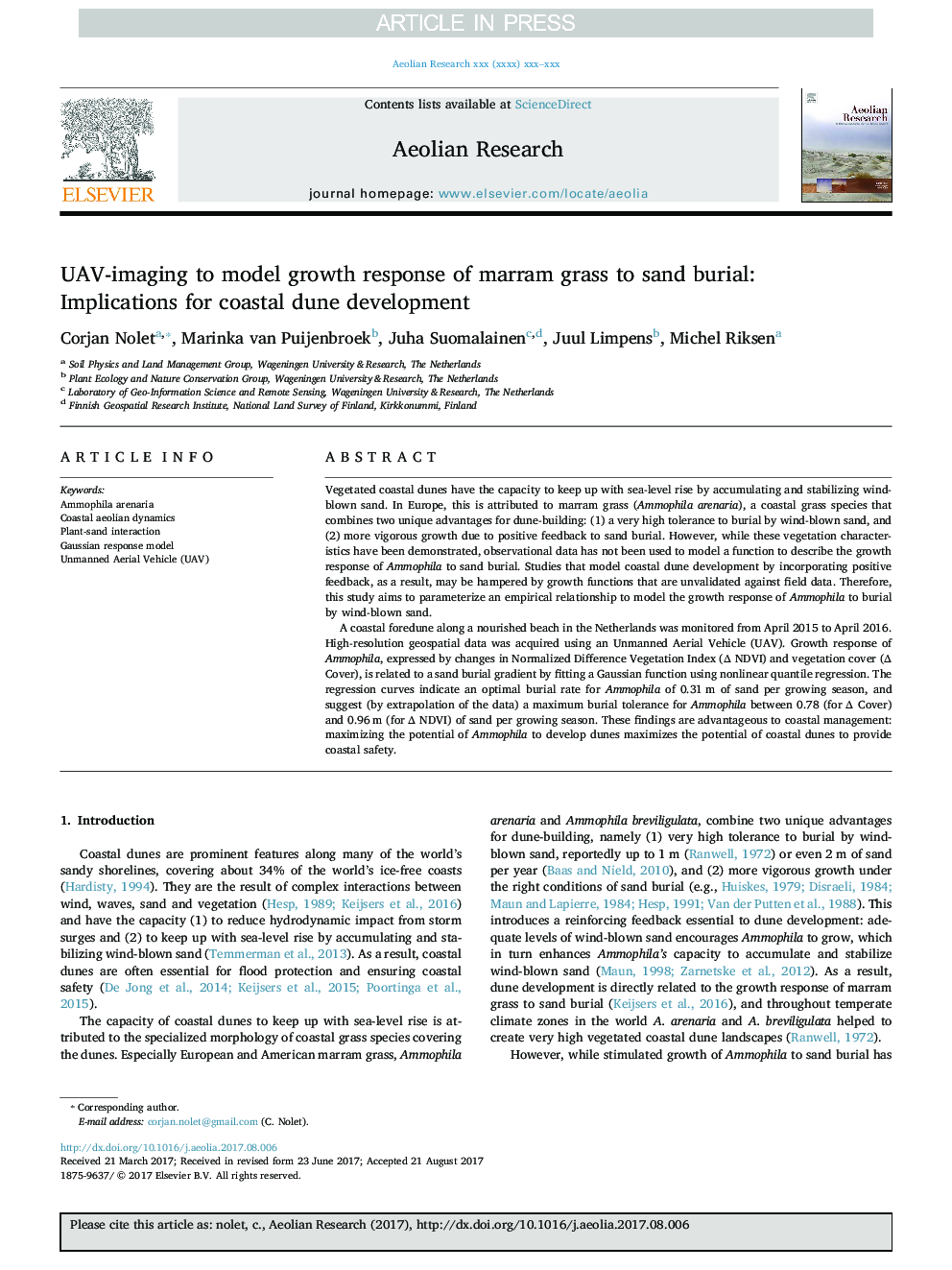| Article ID | Journal | Published Year | Pages | File Type |
|---|---|---|---|---|
| 8906274 | Aeolian Research | 2018 | 12 Pages |
Abstract
A coastal foredune along a nourished beach in the Netherlands was monitored from April 2015 to April 2016. High-resolution geospatial data was acquired using an Unmanned Aerial Vehicle (UAV). Growth response of Ammophila, expressed by changes in Normalized Difference Vegetation Index (Î NDVI) and vegetation cover (Î Cover), is related to a sand burial gradient by fitting a Gaussian function using nonlinear quantile regression. The regression curves indicate an optimal burial rate for Ammophila of 0.31Â m of sand per growing season, and suggest (by extrapolation of the data) a maximum burial tolerance for Ammophila between 0.78 (for Î Cover) and 0.96Â m (for Î NDVI) of sand per growing season. These findings are advantageous to coastal management: maximizing the potential of Ammophila to develop dunes maximizes the potential of coastal dunes to provide coastal safety.
Related Topics
Physical Sciences and Engineering
Earth and Planetary Sciences
Atmospheric Science
Authors
Corjan Nolet, Marinka van Puijenbroek, Juha Suomalainen, Juul Limpens, Michel Riksen,
